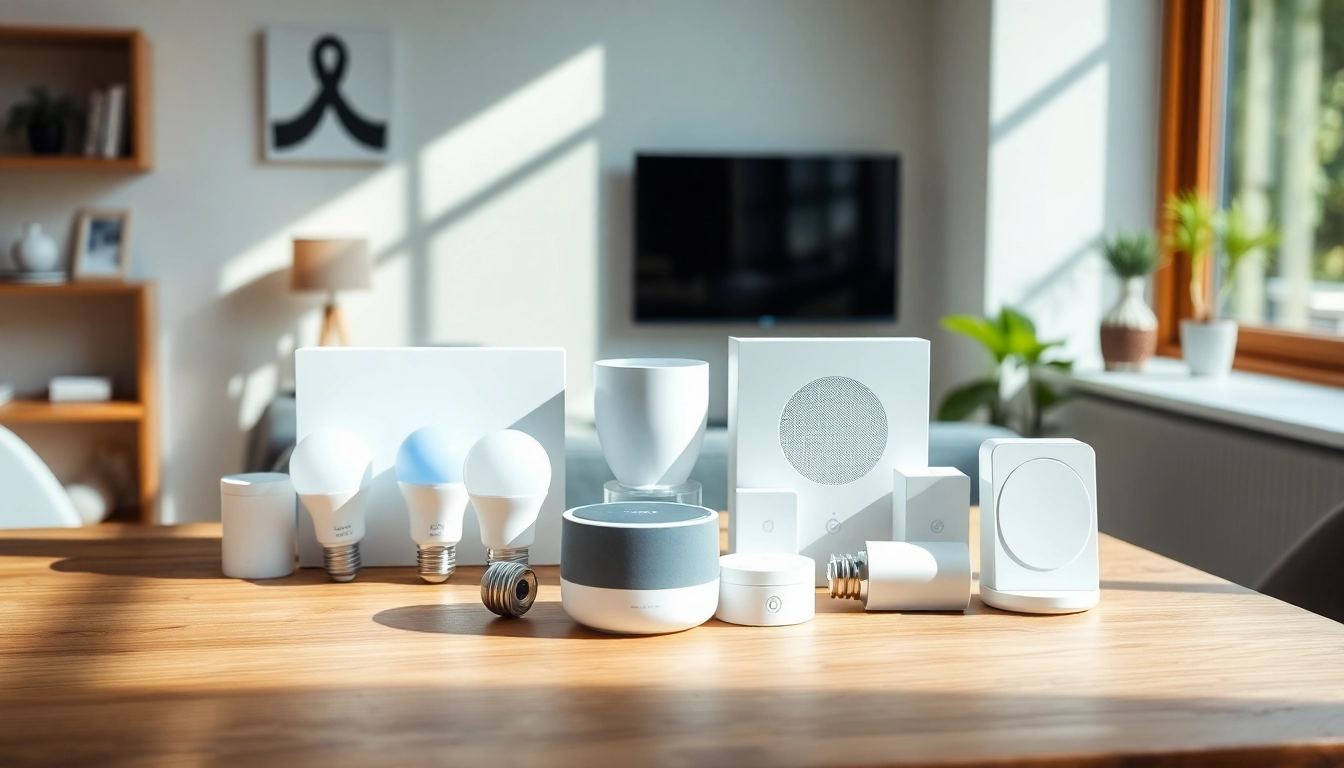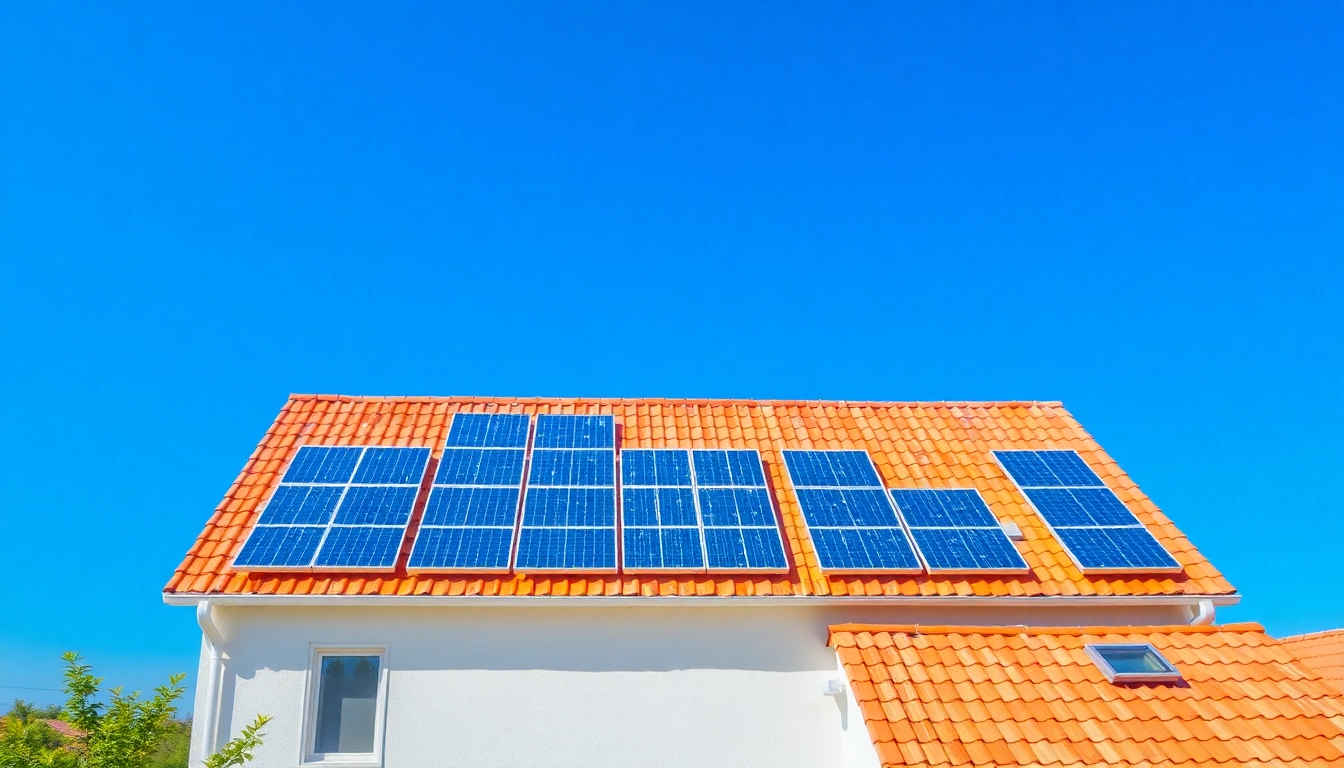Understanding Smart Home Gadgets
What Are Smart Home Gadgets?
Smart home gadgets are electronic devices that connect to the internet and can be controlled remotely. They utilize cutting-edge technology to enhance comfort, security, and convenience in your home. These devices can range from simple smart plugs that turn ordinary devices into smart ones, to sophisticated security systems that offer real-time monitoring through mobile apps. Some of the most recognized gadgets include smart thermostats, doorbell cameras, and smart speakers, all of which play critical roles in today’s automated living environments.
How Smart Home Gadgets Work
At the core of smart home technology is the Internet of Things (IoT). IoT allows devices to communicate with each other and with a centralized system, often managed through a smartphone application or a dedicated hub. For instance, a smart thermostat can learn your schedule over time to optimize heating and cooling, thereby saving energy while keeping you comfortable. Additionally, devices can often be controlled via voice commands using systems like Amazon Alexa or Google Assistant, further simplifying the user experience.
Benefits of Smart Home Technology
The integration of smart home gadgets into daily living offers numerous benefits:
- Convenience: Control your home from anywhere using a smartphone app or voice commands.
- Energy Efficiency: Smart devices, such as programmable thermostats and smart lighting, can reduce energy consumption and lower utility bills.
- Security: Enhancements in home security, including video doorbells and smart locks, increase safety and peace of mind.
- Accessibility: Smart home devices help create a more accessible environment for the elderly and individuals with disabilities.
Essential Best Smart Home Gadgets
Smart Lighting Solutions
Smart lighting solutions such as Philips Hue and LIFX bulbs allow homeowners to control the ambiance of their space through their mobile devices. These bulbs can be programmed to adjust brightness and color based on preferences or time of day. Advanced features include:
- Schedules: Automate your lights to turn on and off at specific times.
- Scenes: Set up different lighting ‘scenes’ depending on activities, such as watching a movie or hosting a dinner party.
Moreover, smart light bulbs are often energy-efficient, resulting in savings on electricity bills over time.
Home Security Devices
Home security is a primary concern for many homeowners. The best smart home security devices include smart cameras, video doorbells, and smart locks. Leading products like the Ring Video Doorbell and Arlo security cameras provide integrated apps that send notifications to your phone whenever motion is detected. Key benefits encompass:
- Real-Time Monitoring: Keep an eye on your property from anywhere via live feeds.
- Remote Access: Unlock doors for guests remotely, ensuring security without compromising convenience.
Effective security solutions also include sensors for windows and doors, alerting homeowners to unauthorized access attempts.
Voice Assistants and Hubs
Voice assistants such as Amazon Echo, Google Home, and Apple HomePod serve as the central hub for controlling various smart devices. They streamline operations and allow for hands-free control of lighting, temperature, music, and more. Voice command features enable a user-friendly experience where simple commands can adjust numerous devices simultaneously. Using voice assistants promotes a seamless integration of various smart home gadgets into one’s daily routine, enhancing overall connectivity.
Choosing the Right Smart Home Gadgets
Assessing Your Home’s Needs
Before investing in smart home gadgets, it’s essential to assess your specific needs and lifestyle. Consider which aspects of your home require automation. For instance, if security is a priority, focus on surveillance cameras and smart signaling devices. On the other hand, if energy efficiency is more critical, smart thermostats and energy-efficient lighting solutions may be the better investment. Mapping out your requirements will help streamline your choices and maximize the benefits you receive from these technologies.
Compatibility with Existing Systems
When selecting smart gadgets, ensure they are compatible with your existing systems. Many devices communicate via specific protocols (e.g., Zigbee, Z-Wave, Wi-Fi), and understanding these can simplify the integration process. Using a single ecosystem, such as Google Home or Amazon Alexa, can help alleviate compatibility issues. Investing in products from the same brand can also ensure that the devices integrate smoothly, creating a more efficient and cohesive smart home environment.
Budget Considerations
Smart home gadgets can offer significant benefits, but it’s crucial to establish a budget. High-end devices often offer advanced features but may not always be necessary for your needs. Balance your budget by identifying essential gadgets you require versus those that may just be nice to have. Remember that investing in energy-efficient devices could result in long-term savings on utility bills, justifying a higher initial purchase price. Researching various models and comparing prices can also help you find the best value for your investment.
Installing Your Smart Home Gadgets
DIY Installation Tips
Many smart home gadgets offer easy DIY installation. Begin by reading the manufacturer’s instructions thoroughly. Ensure that you have all necessary tools before beginning the installation process. For devices such as smart plugs or bulbs, installation can be as simple as replacing traditional models. For slightly more complex devices, ensure your Wi-Fi is strong in the installation area to enable seamless connectivity. Participating in online forums and watching tutorial videos can also provide step-by-step guidance and tips from experienced users.
When to Hire a Professional
Although DIY installation is feasible for many gadgets, some situations may warrant hiring a professional. Complex installations such as smart security systems or integrated home automation systems often require electrical work. Additionally, if you’re unfamiliar with technology or feel uncomfortable handling installations, consulting with a professional can ensure that devices are set up correctly and securely, providing optimal functionality and safety.
Common Mistakes to Avoid
While setting up smart home gadgets, avoid common pitfalls such as:
- Ignoring Compatibility: Failing to verify that your devices work with one another can disrupt your home’s automation.
- Poor Wi-Fi Coverage: Ensure that all areas needing smart devices have adequate Wi-Fi coverage or consider Wi-Fi extenders if necessary.
- Neglecting Security: It’s crucial to secure your home network and devices by changing default passwords and implementing security measures.
Future of Smart Home Gadgets
Emerging Trends
As technology advances, the trends in smart home gadgets are continually evolving. One prominent trend is the integration of artificial intelligence (AI) into smarter and more responsive devices. AI-powered gadgets learn from user behaviors and preferences, enabling them to optimize their performance progressively. Another trend includes the rise of energy-efficient devices that promote sustainability and eco-friendly living. Smart homes are also becoming more integrated, with devices communicating through unified systems to enhance user experience.
Predictions for Smart Home Evolution
Experts predict that smart homes will become increasingly autonomous, with devices managing themselves based on an individual’s routines. For example, future systems could detect when a homeowner leaves for work and adjust security, lighting, and heating accordingly, optimizing for energy efficiency. Furthermore, advancements in sensor technology may allow for improved detection of home-related risks, such as water leaks or potential intrusions.
Integrating AI with Gadgets
The integration of artificial intelligence is one of the most exciting developments in smart home technology. By adopting machine learning algorithms, AI can personalize the user experience significantly. For example, a smart thermostat that learns your temperature preferences will adjust them without requiring manual input. Furthermore, with constant data analysis, AI can help predict maintenance needs, ensuring that your gadgets operate efficiently over time and preventing costly repairs.



